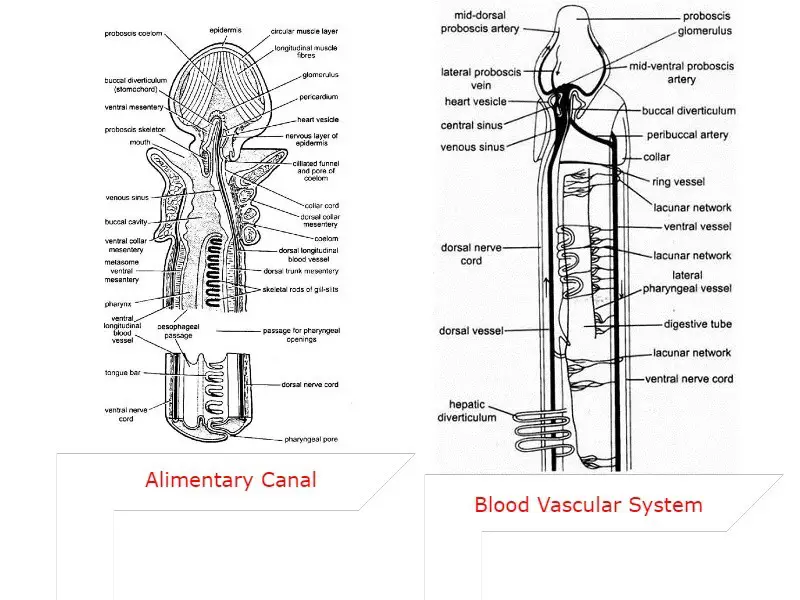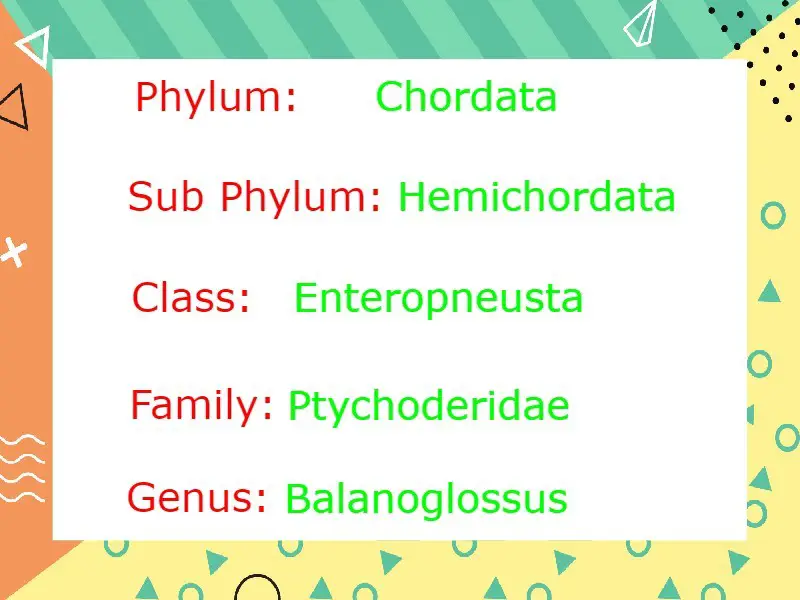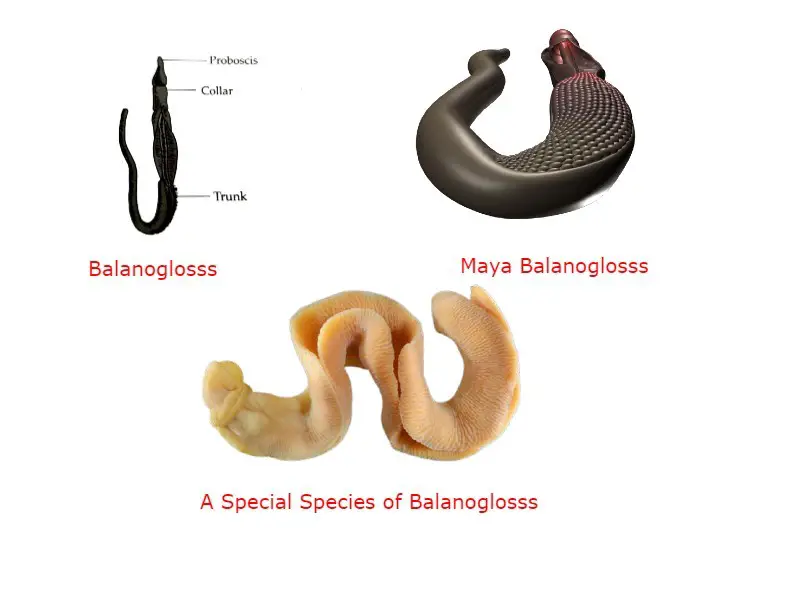When we try to place Balanoglossus in the animal kingdom then we face difficulties due to the presence of similarity of Balanoglossus with multiple groups of animals. So most of the workers get confused about the common features among different groups of animals with Balanoglossus.
In past, most of the workers placed them under a subphylum of Chordata and considered them as primitive Chordata. The reason for placing Balanoglossus under Chordata was the presence of some features which appear similar to the Chordata features. But when research goes on further, it becomes clear that the features in Balanoglossus may look like Chordata but they are not actual.

The first important feature buccal diverticulum, a stiff tubular hollow structure present in Balanoglossus was considered to be a notochord in earlier times. But now it is clear that the buccal diverticulum is completely separate from notochord in structure and development so Balanoglossus do not have the most important features of Chordata, notochord.
Second Features, nerve cord is hollow and dorsal in Chordata but in Balanoglossus the nerve cord is dorsal as well as ventral and it is solid (only nerve cord in collar region is hollow).
Now the other third most important feature of Chordata is pharyngeal gill slits which are present in Balanoglossus but the number and position of gill slits do not match with that of the Chordata.
For those dissimilarities, most of the workers at present days do not consider Balanoglossus under phylum Chordata. In modern times workers placed Balanoglossus in a separate invertebrates phylum.

But they can not be removed from phylum Chordata completely and they are under subphylum Hemichordata under phylum Chordata. The Hemichordata contain less than 100 species and the word Hemichordata represents, half cord or half notochord.
Now we will mention some important workers who tried to find the relationship of Balanoglossus with other groups of the animal kingdom. Bateson was one of the important workers who find the great relationship between Balanoglossus and Chordata and placed Balanoglossus under the phylum Chordata. Host, Marcus, Hyman was some important workers who find the difference between Balanoglossus Chordata and tried to place in a separate individual invertebrates phylum.
Not only Chordata, but Balanoglossus also show many similarities with some other animals groups – Echinodermata, Phoronida, Pogonophora. But we can not place Balanoglossus under any of those animal groups because they also show dissimilarity along with similarity. But it gives us an indication that Balanoglossus, Pogonophora, Phoronida, Echinodermata, Chordata have evolved from a common ancestor.
But most of the workers at modern times refused to assume that Balanoglossus have the same ancestors as that of Chordata, Pogonophora, Phoronida, Echinodermata. Till it is not clear that Balanoglossus belong to which group, with which group Balanoglossus have the closest relationship. So we can not say that Balanoglossus was ancestors of Chordata because of the great dissimilarity between Balanoglossus and Chordata.

Due to the absence of more knowledge in the previous times, most workers assumed that Balanoglossus was the ancestors of Chordata. But when more information starts to gather, it becomes clear that Balanoglossus has only a few features that are related to Chordata features but they are not actual features.
Some workers find the great relationship between Balanoglossus and Echinodermata and try to establish a relationship between them but later some important fundamental differences make this useless.
So finally we can say that in evolutionary history Balanoglossus and Chordata present in the same field but they do not present on the same line of evolution. Similarities of Balanoglossus with other groups of animals may be due to only their common habitat and it may be a result of convergent evolution. Convergent evolution results in similarity in some features but the fundamental features remain different.
Reference:
Detailed Information on
What is Balanoglossus: A Tongue Worm
External Morphology of Balanoglossus
Coelom and Coelomic Fluid in Balanoglossus
Digestive System of Balanoglossus
Respiratory System of Balanoglossus
Blood Vascular System of Balanoglossus
Balanoglossus: Excretory, Reproductive and Nervous Systems
Affinities of Balanoglossus with Chordata
Affinities of Balanoglossus with Rhynchocephalia, Phoronida, and Pogonophora
Hi Everyone!!! Welcome to Imaluop. Imaluop always try to learn some new and he want to share to other people. Here we will try to learn various topics on Science, specially on Biological Sciences.
